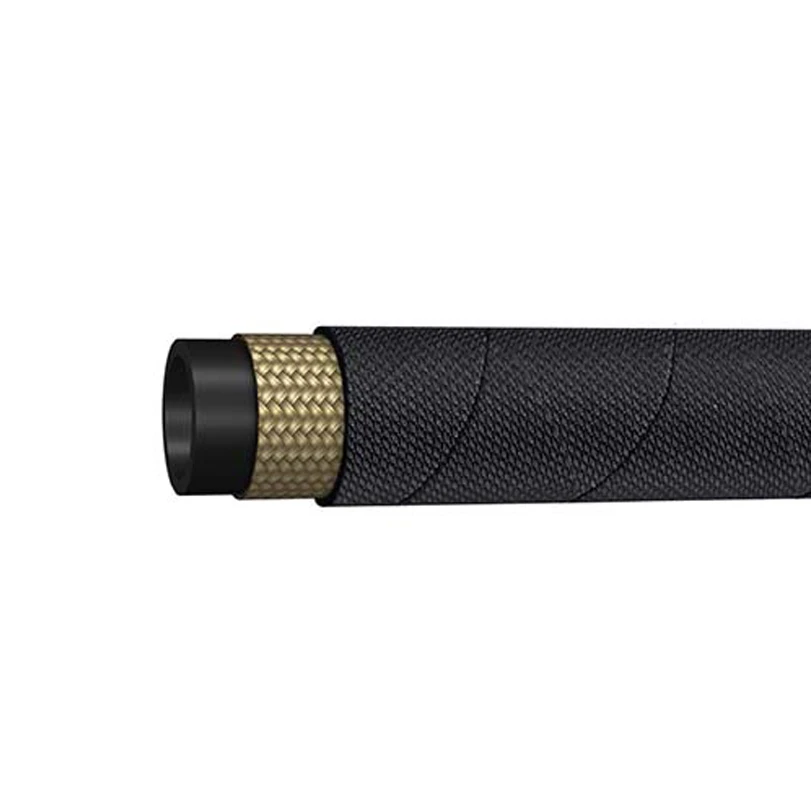335345435
Dec . 04, 2024 16:38 Back to list
High-Performance Double Fiber Braid Hydraulic Hose for Enhanced Durability and Flexibility
Double Fiber Braid Hydraulic Hose A Comprehensive Overview
Hydraulic hoses play a critical role in the hydraulic systems used in various industries, including construction, manufacturing, and automotive. Among the various types of hydraulic hoses available, the double fiber braid hydraulic hose stands out for its superior strength, flexibility, and durability. This article delves into the characteristics, applications, advantages, and maintenance of double fiber braid hydraulic hoses.
Understanding Double Fiber Braid Hydraulic Hose
The double fiber braid hydraulic hose is engineered with two layers of braided fiber reinforcement. This construction method provides enhanced protection against high pressures and harsh operational conditions. Typically using materials like polyester or aramid fibers, these hoses can operate efficiently under rigorous stress, making them ideal for high-pressure hydraulic systems.
The term double fiber braid refers to the way the fibers are woven together in two layers. This design results in a hose that can withstand higher pressures than single-braid counterparts. The inner tube is usually made from resilient synthetic materials, ensuring compatibility with various hydraulic fluids. The outer layer is further designed to resist abrasion, weather, and UV damage, extending the hose's lifespan.
Key Features
1. High Pressure Tolerance Double fiber braid hydraulic hoses can withstand high pressures, often reaching up to 4000 PSI, depending on the specifications. This capacity makes them suitable for demanding tasks in hydraulic systems.
2. Flexibility Unlike rigid pipes, this type of hose is highly flexible, allowing for easier installation in tight spaces. This flexibility does not compromise the hose's performance even under significant stress.
3. Durability The resistance to abrasion and environmental factors ensures that double fiber braid hoses maintain their integrity over time, reducing the frequency of replacements and minimizing maintenance costs.
4. Compatibility These hoses are designed to handle various hydraulic fluids, including water-based fluids, oils, and other hydraulic media. This versatility makes them a preferred choice in many applications.
Applications
Double fiber braid hydraulic hoses find use in several industries due to their robust performance
- Construction Equipment In the construction industry, these hoses are utilized in excavators, bulldozers, and cranes, where high pressures and flexibility are essential.
- Agricultural Machinery Farmers rely on hydraulic systems to operate equipment such as tractors and harvesters
. The reliability of double fiber braid hoses ensures that machinery operates smoothly, maximizing productivity.- Automotive Industry Hydraulic systems in vehicles, such as power steering and brake systems, often employ these hoses due to their robust safety features.
double fiber braid hydraulic hose

- Industrial Manufacturing In manufacturing, hydraulic systems control machinery for metal forming, material handling, and other processes, where the strength of the hose is crucial for system reliability.
Advantages
The advantages of using double fiber braid hydraulic hoses extend beyond performance
1. Cost-Effectiveness The durability and reduced maintenance needs translate to lower overall costs, making them an economical choice for businesses.
2. Safety The high burst pressure and resistance to structural failure provide an added layer of safety for operators and equipment, minimizing risk during operation.
3. Easy Installation The flexibility of the hose simplifies installation procedures, saving time and labor costs.
4. Longer Lifespan Due to their robust construction, these hoses often outlast single braid hoses, contributing to long-term savings.
Maintenance Tips
To ensure the longevity and performance of double fiber braid hydraulic hoses, regular maintenance is critical
- Regular Inspections Check for signs of wear, leaks, or abrasions regularly to address issues before they become significant problems.
- Proper Storage When not in use, store hoses in a cool, dry place away from direct sunlight to prevent deterioration.
- Avoid Kinking Ensure hoses are not kinked or excessively bent during installation, as this can impede fluid flow and lead to premature wear.
- Fluid Compatibility Always ensure that the hydraulic fluid used is compatible with the hose material to prevent degradation.
Conclusion
Double fiber braid hydraulic hoses are a pivotal component in the efficiency and reliability of hydraulic systems across various industries. With their impressive pressure tolerance, flexibility, and durability, they are designed to meet the demanding needs of today’s industrial applications. By understanding their features and adhering to proper maintenance practices, users can maximize the performance and lifespan of these essential components.
-
SAE 100 R17 Black Smooth Cover Hydraulic Hose
NewsMar.07,2025
-
SAE 100 R17 Black Smooth Cover Hydraulic Hose
NewsMar.07,2025
-
SAE 100 R17 Black Smooth Cover Hydraulic Hose
NewsMar.07,2025
-
SAE 100 R17 Black Smooth Cover Hydraulic Hose
NewsMar.07,2025
-
SAE 100 R17 Black Smooth Cover Hydraulic Hose
NewsMar.07,2025
-
steel wire braided hydraulic hose
NewsMar.07,2025



